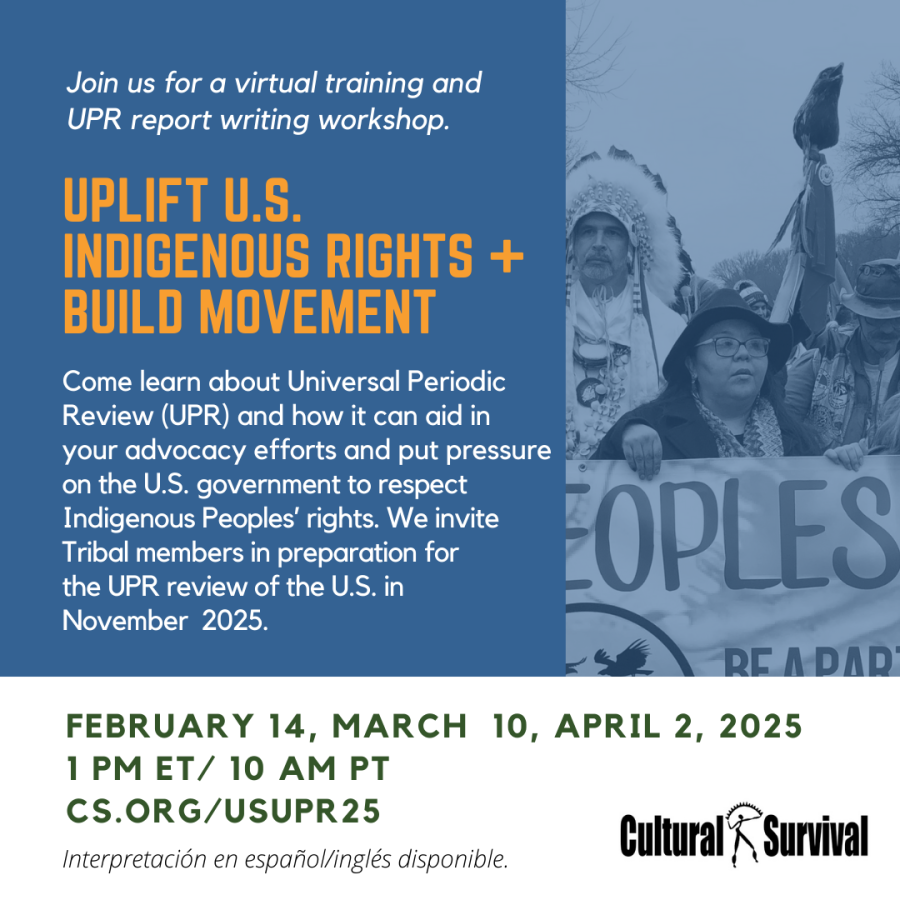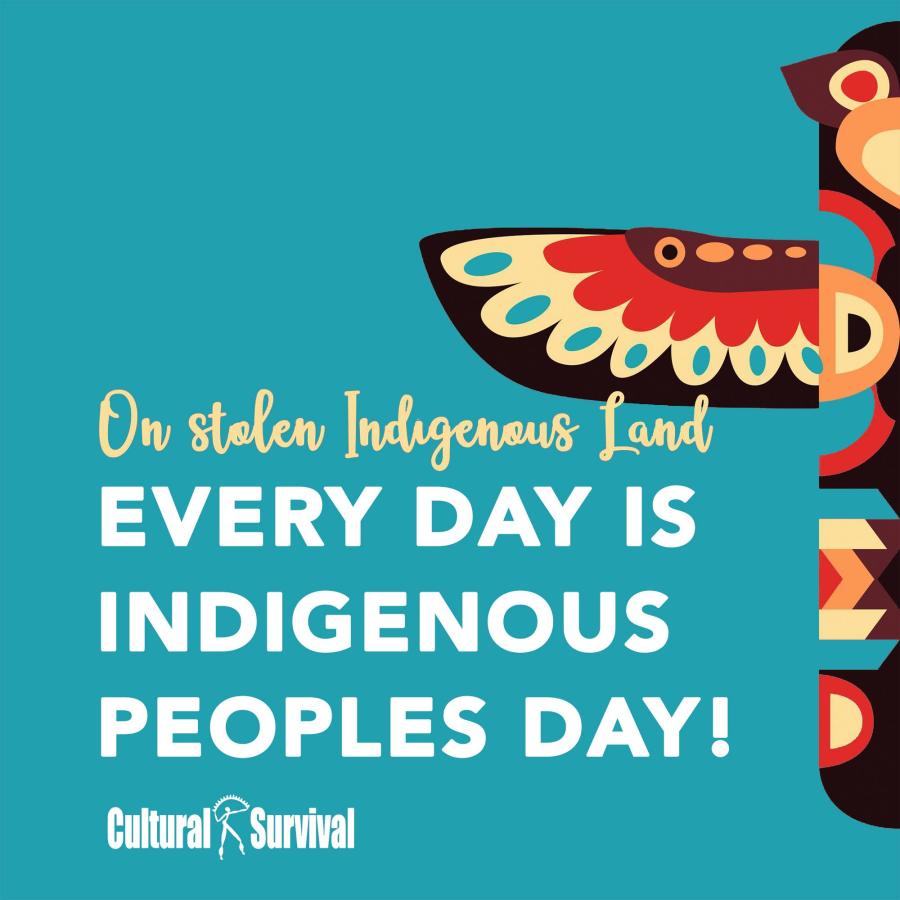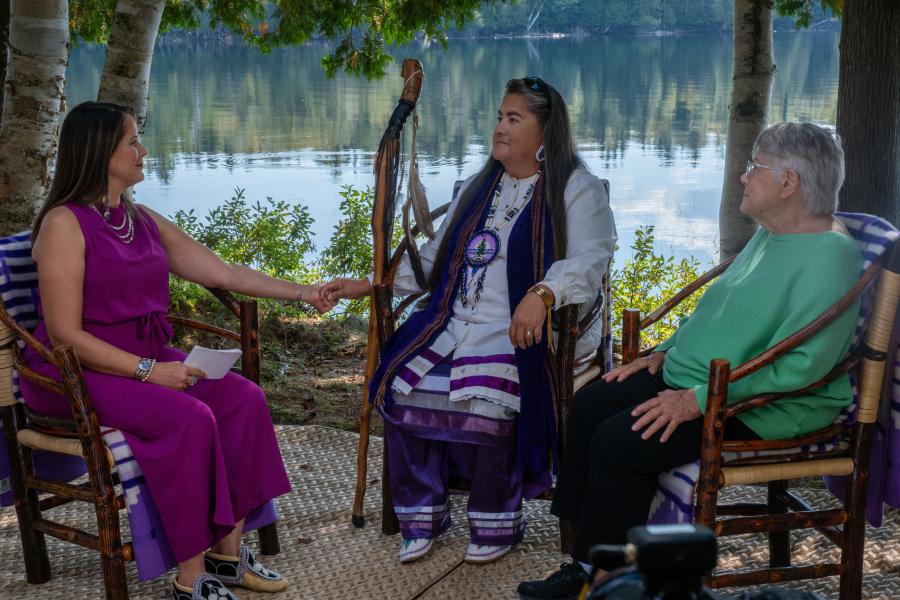An overview of the disappearance of America’s first languages: how it happened and what we need to do about it.
Ho nihkânetike. (Hello friends.) My name in English is Jacob Manatowa-Bailey. I am the director of the Sauk Language Department for the Sac and Fox Nation of Oklahoma. Sauk, like so many indigenous languages on this continent, stands at a crossroads. In the next few years my tribal community will either see our language restored to a new generation or we will bury it forever in the graves of our last few elderly speakers. I tell you this in such stark terms because language advocates and those who would support them cannot pretend that there is a middle ground. The situation faced by the Sauk people is repeated to greater or lesser degrees throughout the indigenous nations of North America. There are many people, including many Native Americans, who would like to believe otherwise. There is both great denial and a severe lack of awareness about the imminent loss of the vast majority of indigenous languages. The reality is that our tribal languages have become like the handful of speakers who carry them: old and frail. Without decisive action they will not be with us much longer. When a language dies, the loss to a tribal community—and to the world—is beyond measure. Entire systems of thought, belief, and practice become permanently removed from the storehouse of human knowledge. This is the final stage of a process that has deep historical roots, the culmination of hundreds of years of colonization, assimilation, and genocide.
We cannot talk about language endangerment or revitalization without first acknowledging these historical origins. For example, by the time the Sauk people were removed to Oklahoma in 1867 they had experienced more than 200 years of migration, war, and disease. Despite all these changes and challenges the Sauk people still had their language when they made this last forced removal to a new land. Ultimately it was not military conquest, disease, or forced relocation that threatened our language but psychological warfare. In order to kill a language you must get inside someone’s head; you must break their spirit and their mind, not just their body. The health of a language depends upon parents who teach it to their children, and children who then grow up and teach it to their children. One cannot kill a language as long as children speak it. So to make children stop speaking the Sauk language the American government removed them from their families and taught them through violence, abuse, and shame that their language was evil, dirty, and inferior to English.
The primary weapon for this psychological war was the white education that government officials forced upon the Sauk people after five decades of resistance. There is a direct relationship between the introduction of white education and the decline of the Sauk language. Prior to the Sac and Fox Manual Labor Boarding School there was no institution among Sauk people in which a person was removed from intimate family, clan, and tribal relationships in order to learn. Compulsory white education for Sauk children began in 1871 with 24 students at the mission school. It increased with placements in off-reservation boarding schools during that same period, and was essentially complete by the closing of the Sac and Fox Manual Labor Boarding School in 1917, when Sauk children were permanently sent to local public schools. By the 1930s all but a few Sac and Fox families stopped speaking Sauk at home. Within a span of 60 years Sauk went from being spoken by almost every tribal member to being spoken mostly by older people amongst themselves. Not a single tribal member born in the 1930s or beyond successfully passed on fluency to their children.
The Sauk experience with white education is not the sole cause of the decline of the Sauk language. From the 1870s through the 1920s the Sauk people faced aggressive efforts by the American government, churches, and the white population to eliminate our way of life. The government abolished the Sauk National Council in 1891, severely reducing our control over our own affairs. It divided the Sac and Fox reservation into allotments, breaking up the villages that had been the basis of our social existence. The opening of the reservation brought a flood of white people into our territory and irrevocably changed our existence forever. But no policy of the United States stands out more clearly as a blatant attempt to destroy our language than forcibly removing Sauk children from their families and taking control of their education.
I live in Oklahoma, the heart of Indian country. All of the tribes here—and throughout this continent—tell a similar story. Because of this history, all around me indigenous languages are dying. Most are passing slowly and silently out of our tribal communities. At least 14 Oklahoma Indian languages are already extinct. Of the 23 remaining languages, only 3 have fluent-speaker populations over 1,000. At best an additional six languages may have fluent-speaker populations in the hundreds. Two languages may have 20 or 30 fluent speakers. The remaining 12—the majority of Indian languages in Oklahoma—all have fewer than 10 living fluent speakers. With the exception of the Kickapoo, the small number of Cherokee immersion-program students, and a handful of Creek, Choctaw, and Cherokee families still teaching the language in the home, all other Oklahoma Indian languages are on a countdown towards extinction as spoken languages. Despite the critical state of these languages, only a single tribe within Oklahoma, the Cherokee Nation, has a language program that is effectively creating new fluent speakers.
Fluency is the determining factor in language survival. Indigenous languages are dependent upon the ability of tribal people to pass the words, sounds, structures, thoughts, concepts, values, and feelings of the language to the next generation. No dictionary, database, audio recording, or other language documentation can match the importance of creating fluency. Indigenous languages do not survive in translation. They become fragments of their former selves, shadows of what they once were as living entities. The creation of even a single new fluent speaker of an endangered language extends the life of that language by decades. Each generation of fluency opens the door to sustaining the fragile connections that keep the language alive.
The reasons for the small number of language revitalization programs around the country are complex and difficult to explain. But there is one that is fundamental: we lost control of the education of our children.
Successful indigenous language revitalization efforts within the United States vary widely in terms of geography, size of speaker population, culture, and history, but all depend on regaining or maintaining a degree of local control over education. Education, in this sense, means the space, capacity, and desire to pass on our tribal languages to future generations. It does not necessarily mean school, although in many communities control over institutionalized education does play a major role. The core of any successful revitalization effort is the creation of a place where the language is consistently spoken, valued, nurtured, and protected. This place may be as small as a master-apprentice relationship, where a fluent speaker partners with a language learner, or as large as a multi-site preschool-through-university movement serving thousands of students, such as the one Native Hawaiians have built over the past 30 years.
The distinguishing characteristic is not the size of the program but the fact that the language has a home and people who take care of it. Endangered languages—like the young children most successful revitalization efforts address—require constant support. You can’t neglect a young child and expect that he or she will grow into a healthy human being. Similarly, you cannot nurture an endangered language back to health in 15 minutes a day in a public school program or through an evening community class once a week. Some form of immersion—where learners are surrounded by the language for hours at a time on a daily basis—is essential for creating fluency. The concept may be simple, but organizing an immersion program is a huge undertaking. Language advocates have to build community support, find funding, train teachers, develop curriculum, locate facilities, provide transportation, and deal with tribal, state, and federal policies that are hostile or indifferent to indigenous language survival.
Language survival is a sensitive issue in any tribal community that faces the often-divisive dynamics of poverty, assimilation, and competition for limited resources. Speakers trying to teach without training, curriculum, and other necessary resources become frustrated with the inability of nonspeakers to learn. Learners stop attending classes because they don’t progress. Projects that seemed like good ideas on paper fail because they weren’t honestly assessed in terms of the ability of community members to implement them. Sincere grassroots efforts by motivated individuals are perceived as being only for certain factions because they did not emerge from community-wide consensus.
Thankfully there are proven ways to create a space where an endangered language will flourish again. Model programs such as the Hawaiians’ Pünana Leo and the Blackfeets’ Piegan Institute show that it is possible to create indigenous-controlled language educational institutions within multiple historical, social, geographic, and political contexts. Yet no one solution fits every tribal community.
Two interrelated issues stand out as major obstacles to successful language revitalization. The first is the need for a huge influx of training, capacity building, and resources for those involved in language revitalization efforts. Many good people who support the survival of endangered languages have not been adequately trained in immersion methods, grassroots organizing, curriculum building, or fund raising.
The second major obstacle is the need for reliable sources of funding for the development and operation of immersion programs. In passing the Native American Languages Act of 1992, Congress gave lip service to “help[ing] assure the survival of and continuing vitality of Native American languages.” Yet since that time, the federal government has not substantially increased its level of funding for native language programs—currently about $4 million annually—nor has it significantly adjusted its educational policies to promote the most effective language revitalization methods. Hundreds of the 562 federally recognized tribes, plus many unrecognized tribes or bands, compete for these funds. Not even taking into consideration other indigenous groups or organizations, that amounts to an average of $7,117 of funding annually per federally recognized tribe. To put this into perspective, the operational cost of the Cherokee Nation immersion program for three-to-six-year-olds is more than $2.5 million annually. To make matters worse, support for language programs from foundations and the corporate sector has been slight. Even the few foundations that have a history of supporting language programs tend to support large programs or those in narrowly circumscribed regions. No foundation currently is providing significant seed money for nationwide language revitalization development.
The cold, hard reality of the capitalist world is that without funding for operational costs it is impossible to move forward even if all the other essential components of an effective language revitalization program are in place. We face that exact situation here in Sac and Fox country. Two years of careful planning and development have brought us very close to opening an immersion school, but without a significant increase in funding the Sauk Language Department simply won’t be able to do so.
The Grotto Foundation of Minnesota, which has committed $5.6 million over 15 years to Ojibwe and Dakota native language revitalization efforts, offers a model of what can be achieved when native communities have adequate funding and technical support, coupled with flexible criteria for addressing the problem. To duplicate the Grotto model on a national scale, the issue of language revitalization needs a higher public profile. But even more important, key audiences, including foundations, tribal governments, Native American casinos, and corporations and businesses that employ or serve Native Americans, need to be educated about the problem.
The harm caused to indigenous communities by language loss is undeniable. When you remove a people from their language, you cut out the heart of their identity. When a language dies, everything that is attached to it—prayer, song, stories, dances, ceremonies, and every other aspect of a tribal system—becomes more difficult to sustain. People become less confident, conflict increases, and assimilation expands more rapidly. Language revitalization is not a panacea, but model programs have demonstrated that it increases self-esteem, academic achievement, and participation in traditional practices, as well as a whole range of other positive benefits. Simply stated, when tribal children are given the opportunity to learn their language they are happier, healthier human beings. It doesn’t mean their lives are easier. It does mean that their identities are stronger and that they are better prepared to face the challenges of being an indigenous person in the modern world.
The challenge is great. Of the estimated 154 tribal languages that still exist, 56 percent have only a few elderly speakers. The Indigenous Language Institute reports that 89 percent of all North American languages are in danger of extinction. Of 2 million American Indians, only 18 percent still speak their tribal language, and the vast majority of these are elderly. Moreover, almost half of the 18 percent belong to a single tribe: the Dine (Navajo) Nation.
What is clear is that our old people, and the ones who came before them, did not wish our languages to die. Some accepted, some resisted, some regretted, and some despaired. Many looked for a path to simultaneously be indigenous and survive in the white man’s world. Some of them left a written record; others told their stories only to families and relations, or kept them to themselves. Yet I believe all of them, back to the beginning, stand together on the other side, watching the changes that we are experiencing as Native Americans. They see that we are asking ourselves the same questions that they asked when they were here on this earth. They wonder if we will forget who we are and where we come from. They wonder if we will let our languages pass from the face of this earth. And they hope that we act before it is too late.



